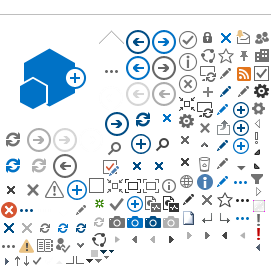Program Overview
The Urology Residency Program here at Hamad Medical Corporation is five years in length: Pre-Urology (PGY-1), URO-1, URO-2, URO-3, and URO-4 (Chief Resident). Faculty closely supervises the patient care provided by the residents at all times. Duty schedule for all residents is in-house call every four days.
Pre-Urology: During this year, the resident spends the first six months (July - December) in the General Surgery Service. During the next six months, (December - June), the resident will rotate in Accident and Emergency and critical care for 1 month each, and vascular surgery and Trauma for 2 months each.
URO-1: In this year, six blocks will be spent in Adult Urology. The URO-1 resident responsibilities include daily rounds on inpatients and assisting in the inpatient and Emergency Room consult service.
This rotation allows the URO-1 resident to learn and participate in the initial evaluation, diagnosis, selection and implementation of therapies and management of complications in inpatient settings. It also gives the resident the opportunity to learn and perform minor therapeutic procedures and to gain surgical experience in the operating room setting.
The URO-1 resident will also spend 4 blocks in the Pediatric Surgery Service. Patient care provided during the time spent in the Pediatric Urology Service includes operating room, inpatient care, Emergency Room and inpatient consult service. The final 2 blocks will be spent in Nephrology and transplantation services during which the resident will undergo daily rounds on and consults of in-patients, learn the fundamentals of dialysis, and participate in outpatient clinics especially transplant clinics where he/she will understand all aspects of peri-operative transplant care.
URO-2: During URO-2, the resident will start rotating in urology subspecialties. In addition to 6 blocks spent in adult urology, the resident will spend the other 6 blocks in the uro-oncology service. The resident’s operative experience will evolve, and he/she will be exposed to more advanced surgical procedures. He/she will also understand the fundamentals of urologic malignancy care through evaluating patients under supervision, performing diagnostic modalities and participating in surgeries.
URO-3: this entire year will be spent in urology subspecialties. The resident will spend 4 blocks each in the Andrology, Male Infertility and Voiding dysfunction unit. During this year, the resident will strengthen his/her understanding of different urologic subspecialties necessary for his final chief resident year. In the Voiding Dysfunction Unit, he/she will be exposed to various Neuro-Urology and Female Urology cases both in- and outpatients. The resident will undergo various procedures during this rotation from Urodynamic study and Electromagnetic chair to sling procedures, Botox injections, prolapse surgery and neuromodulation all under the supervision of the unit’s faculty.
The Andrology and Male infertility rotations are designed to provide the resident with experience in managing various Male Sexual Diseases under direct supervision.
URO-4: This year the resident serves in the capacity of Chief Resident, performing surgical procedures commiserating with his/her abilities, and carrying out administrative duties.
The entire year will be spent in General Urology Service during which he/she will carry superior responsibilities, supervising resident work, and providing educational experiences for the junior level residents.
Goals and Objectives
Goals
- The primary goal of the urology residency program is to produce urologists able to practice urology in any environment or geographic location with the flexibility to pursue a variety of career options.
- The resident will be competent in-patient care, medical knowledge, practice-based learning, interpersonal skills and communication, professionalism, and system-based practices.
- Graduates will have the necessary didactic, technical, and clinical exposure necessary to meet the requirements for certification by the Arab Board of Urology and those of the ACGME-I.
Objectives
Each resident will, by the end of the residency:
- Attain superior knowledge of etiology and management of urologic disease in the following domains: andrology, infertility, neurourology, oncology, and endourology.
- Provide care to patients with graded responsibility by level of training, including initial evaluation, diagnosis, use of information technology, selection of appropriate therapy, performance of various surgical techniques and management of any adverse events.
- Learn principles of basic and clinical urologic research.
- Develop productive and ethically appropriate relationships with patients and families and be sensitive to patients’ culture, age, gender, and disabilities.
- Work effectively as a member of entire health care team.
- Demonstrate integrity and responsibility in professional activities.
Clinical Training and Key Rotations
BLOCK DIAGRAM OF RESIDENT ROTATIONS
|
YEAR |
6 blocks |
2 blocks |
1 block |
1 block |
2 blocks |
|
Pre-URO |
GS |
Trauma |
EM |
SICU |
VS |
| |
|
|
|
|
|
|
YEAR |
6 blocks |
4 blocks |
2 blocks |
|
|
|
URO-1 |
GU |
PS |
Ne+Tx |
|
|
| |
|
|
|
|
|
|
YEAR |
6 blocks |
6 blocks |
|
|
|
|
URO-2 |
GU |
ONC |
|
|
|
| |
|
|
|
|
|
|
YEAR |
4 blocks |
4 blocks |
4 blocks |
|
|
|
URO-3 |
INF |
VDU |
AND |
|
|
| |
|
|
|
|
|
|
YEAR |
12 blocks |
|
|
|
|
URO-4 |
GU |
|
|
|
| GS: General Surgery - EM: Emergency Medicine - ICU: Intensive Care
VS: Vascular Surgery - GU: General Urology - PS: Pediatric Surgery
TRAN: Transplant - ONC: Uro-Oncology - VDU: Voiding Dysfunction Unit - AND: Andrology - INF: Infertility
|
Contact Information
Program Director:
Dr. Khalid Al Kubaisi
Associate Program Director(s):
Dr. Abdulla Al Naimi
Dr. Ahmed Al Malki
Program Coordinator:
Annu Thomas Kattikaren
Program Email:
akattikaren@hamad.qa
